La Habana: Cuba tugs at our emotions.
Travel Banter. Immersing into the local city life while we are in Cuba.
These are the narratives from our latest podcast. We know that some people prefer to read rather than listen, so we are posting the stories in the Travel Banter section. Remember that you can customize your subscription and select only the sections that interest you. Thank you for following along. We love you. (You can listen to the podcast here)
The Streets
Old Havana is old. It is in the name, and it is in the way things look and no longer function. Everything is tired. Unkempt. Drawn. As if the city streets suffered a century of insomnia. The tourist center looks good, of course. The government still spends money to impress the others. But the streets where people live their daily lives have been forgotten by the maintenance crews, garbage collectors, and cleaners.
People themselves still try. A man is sweeping the curb with a makeshift broom of fronds without a handle. Each frond is only a foot long, and the man must bend double to reach the ground. He sweeps the trash a few feet down the street, away from his tienda. He leaves the small pile in front of a shuttered, disused door hanging crooked in a crumbled concrete facade. He has nothing to pick it up and nowhere to toss it. Then he walks into his little shop, and I can see him behind the iron window gate arranging the few things he has to sell. Not many. An assortment of cans and peppers.
The streets are narrow and busy. Loud. People walk in both directions on the road itself, competing with the forty-year-old cars, mopeds, bicycles, and hand-pushed carts. Beep-beeps of horns warn people of them coming. People don’t move away but know not to step further into the street. The cars and motorcycles weave around them and around the minefield of deep potholes. The traffic moves at the speed of a fast runner, which is too fast for the chaos of cars and walkers.
There are sidewalks, but they are empty. Nobody uses them in Old Havana. ’No, no! Walk on the street.’ Our host explained, but my slow Spanish lost the why in his explanation. In two blocks, I understand. I see concrete rubble on the sidewalk - jagged blocks the size of baby heads lay crumbled as if tossed there. I look up, and the balcony above sports a fresh gauge, where these strewn rocks had been the morning before they fell to the street.
We will walk on the street and heed the beep-beeps.
The Money
The Western money is not good here. We need to exchange it for the $CUP - the currency used on the street. The official exchange rates are ludicrous; you get almost nothing for your money. But it is fair on the streets.
We wander the neighborhood, twenty minutes out of Havana, looking for someone with whom to exchange. It is not obvious. People are going about their business or just sitting on the curbs. A mob is queueing at a Mercado selling bread and vegetables. “Ultimo?” A new arrival yells. Someone raises their hand. The new arrival will follow them once the queue moves. But they still have to wait for the counter to open.
Dollars are still in our pockets. We found no one. Instead, we walk on a pedestrian median of the main boulevard through the smoke and pollution of old cars. A military complex to the right, then another on the left, then a hotel. It is nice, has a club, a guard station and well-maintained grounds. For the foreigners, most likely.
On the way back, there is a lady with a dog. The dog is small and as old as the owner. We say hello as we pass her in the opposite direction. She holds a leash in one hand, the fingers of the other are stretched wide to hold five packs of cigarettes. She asks us if we want to buy any after we already pass. No, but we are looking to exchange dollars. She walks over.
“I can help you,” she smiles. “What rate are you looking for?”
“At least three hundred.”
She smiles and nods.
We follow her on a dirt pass between the trees and the fences, then onto a street that is not much wider. We ask questions, she talks. Life is hard here now. Was it ever easier? Yes, when Obama was president, more people came, and more people spent money, and there were more jobs. What happened after? Trump and Rubio - they hate the Cubans. Then, the pandemic. No, there is no future now. She drops her dog at her place, then takes us up the steps a few homes away. “Can’t exchange today,” a woman upstairs tells us.
Our guide shrugs and takes us to the next place. Talking all along about her job at the policlinic. She is a clerk handling paperwork there, but the pay is enough for only half a month. She needs to do more. Yes, do more, like the rest. But she is lucky, she says, she knows how to make it work. Then she stops and tells us. “You said you wanted three hundred, but I can get you three hundred and forty. Could I have a commission?” I think for a second, but it is fair. I would accept three hundred, so why not. I nod. Sure.
There are two people at the house with the gate, waiting for their cash. The woman brings a neatly stacked pile of Cuban money to the first. The cash is in even blocks of five hundreds, wrapped with another five. The man leaves without counting. The woman takes green dollars from the next man, disappears inside, and shows up with another deck of money. She repeats the process with us.
Our guide takes the cash, counts her take, and gives us the rest. I don’t mind. She places her hand on my shoulder and nods. She places both hands on Alex’s shoulders and nods. Then, we watch her walk back home. She does not need to sell cigarettes today.
The People
Come, come visit us. Amaury urges on What’s App. He sends us an address in Central Havana. His wife, Yeni, sends additional instructions. Her English is great, much better than our Spanish. We have never met them, but Amaury is the father of my sister-in-law’s partner, Miguel. Miguel insisted his father wanted to see us; to him, we are family. I was not sure until I saw the urgency of Amaury’s texts.
Jorge picks us up. He is a driver for hire around where we stay. His car is a 1960s Chevy. It looks great on the outside and looks as good as it can on the inside after 60 years of use. Jorge was a kid when the car was built, so they are contemporaries, both creaky but resilient and able to handle the bumps of Cuban roads and the bumps of Cuban life.
He drives us on the most direct route to Habana Vieja.
“These buildings,” he points to the mansions on either side of the road, “belonged to the wealthy before the revolution.”
“Who owns them now?” I ask.
“The people!” He laughs at his own joke. He thinks for a bit, pushes the car back into the third gear - it stubbornly pops out into neutral every half-a-kilometer. “No, it is all embassies now.” He points at the flags. Algiers. Spain. India. Russia is in the largest complex. The United States is in a respectable corner building.
He talks as we drive on Malecon following the coast, but I no longer pay attention as the sites capture me. The old Spanish Fort bookends the city a few miles away, overwhelms all else. Four-story buildings expose their innards. Their facades were destroyed a few hurricanes ago and untouched since. Brand new hotel here, another there, in the midst of dilapidation. The sea crushes over the sidewalk and spills onto the road. So unlike anything else I have seen. The sights are captivating. I can’t pay attention to words.
We drive off Malecon and meander among the walkers on the streets of Old Havana. A few blocks, a wrong turn, but we arrive at the address and find Amaury. We sit in his tiny apartment and chat for a bit. Give him gifts from his son.
“I will show you the city,” he says. He speaks in slow Spanish, just right for us to follow. We follow him on the street. Walk the Malecon and past the Forts. He talks of history, what the city has been, what it could have been, and what it has not become instead. His head hangs low.
We walk past the art, the statues, and the antique cars, ready to whisk the tourists to the beach. We walk past restaurants full of people, none of them Cubans. Amaury talks of his life and his dreams. We are living his dreams, he says. Alex and I. Traveling the world, free to enter countries closed to him, because of the visas and because of the money. He does not complain. He just tells the story of his Cuban reality.
We meander the streets, take photos of the old buildings, say no to street peddlers who want to sell us a tour or to invite us into “the only Speakeasy in Cuba.” It is entertaining, like any other tourist traps all over the world.
We walk to a small hotel where Yeni works. She is a manager, and a host, and a boss lady to a skeletal staff. The place is beautiful and artfully designed, at odds with the ruin of buildings around it.
“Who stays here?” I ask.
“Mostly Germans. They come to learn to dance Cuban salsa, mambo, and samba. It is a special thing we have going here.”
A group of Germans arrive as if on queue. They hug the staff and ask for Crystal, the local beer. The three women and three men chat with us. For an hour and a half. Lovely people who just came from an excursion to the beautiful and historic Trinidad on the other side of the island. They like it here. The culture, they say. The people. The hardship, yet, the happiness of them. How? The dancing, maybe. It is easy to like this place when you have an option to leave.
We walk to a restaurant across the street from the Capitol. The main dining room is at the top of three flights of stairs. We pass the bar and waitstaff, all men, waiting for their turn. We order appetizers and wait for their friends. In two groups, four of them arrive to celebrate Amaury and Yeni’s anniversary. It is like any other dinner you would have with friends in any other place. Except Amaury says it is their only time in a restaurant this year, for the anniversary. It is only March.
After dinner, we get into a three-wheeled Tuk-Tuk. It is electric and new. Their friend bought it last year. It has enough room for a close five, but all eight of us squeeze in the back and the front bench. We drive through the streets of Havana to have cappuccinos at a bakery near Amaury and Yeni’s apartment.
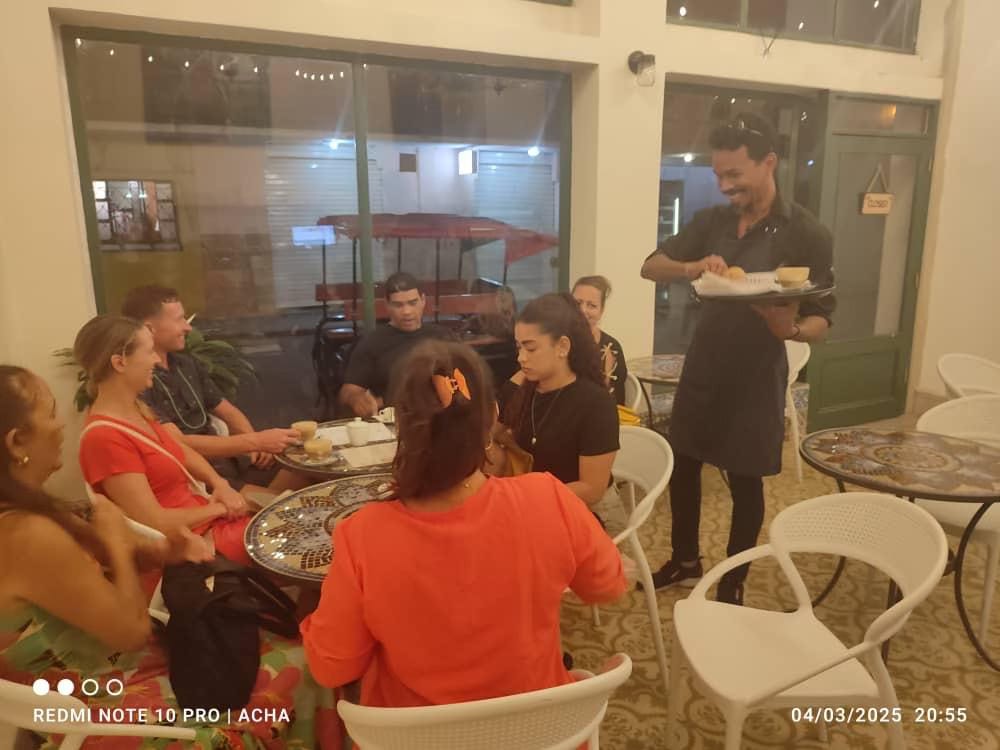
The bakery is a newer place in an ancient apartment building, decorated like any Western coffee shop, with staff wearing stylish aprons. People come in from the street to buy a treat, a coffee, or a loaf of bread.
“They seem to have all the bread you want here,” I say.
“Yes. It is great. It is $200CUP per loaf. It is only $1CUP with a ration card, but with rations, it is only a few loaves per month. So, if you have a nice side hustle, you can buy all the bread you want.”
“It’s tough,” I say.
“Ah,” Rosallita, one of our group, waves her hand, “We are happy people. When the sun shines, we smile; when it rains, we laugh. What else can we do?”
They all laugh and raise the cappuccinos in toast.
The Dancing
On Saturday, we are back at Yeni’s hotel. The local Cubans are gathering on the rooftop space. It is their night to dance. Pedro, the owner of the hotel, opens it to the locals every weekend.
The Cuban salsa lessons start at five and go on until seven, and then there is a dance party. People walk to the bar and order a beer or a Canchánchara, a cousin of a better-known Brazilian Caipirinha. The crowd is mostly young, around thirty. A few are our age. They mingle and chat.
The lessons are fun. Men and women split into two groups and follow the instructor's energetic lead. His explanations are impassioned. His urge to pass his excitement for the music is contagious. It is clear that this group comes here every Saturday. The steps are advanced for the two beginners. But the instructor makes it work and we dance along without feeling abandoned.
When the party starts, people dance. Happy. The same scene I have seen everywhere else, carefree for the night, away from the pull of daily stress. But it is a civil affair. It has none of the feel of “meat-market” dance clubs fueled by booze, drugs, and overt sexual tension.
Pedro, the owner, chats with us about our journey. He tells us of his. How have you come to own such a niche hotel? I ask. He lived in Germany in his youth and got to know people, made connections, and brought ideas home. He asks if we like rum, and we nod. He brings out a bottle and sample glasses. We try it and it is good. Old Habana rum, he tells us, is the same as Bacardi. Literally, he says. I make a note to look it up.
You are not driving, are you? He inquires. No, I say. Every twenty minutes after, he returns with another bottle. He makes me open it, then splash a tiny bit on the ground to heed a tradition. “I hate this tradition,” he says, “such a waste, but you are a guest, so we have to.”


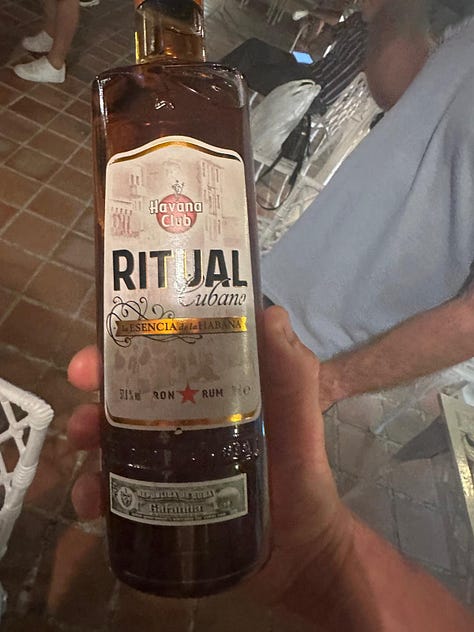
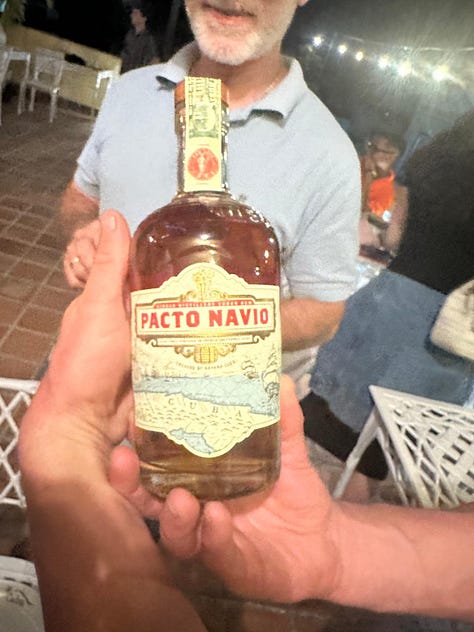
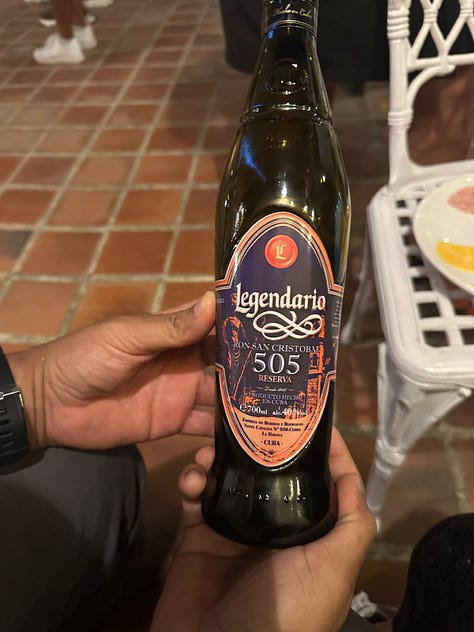
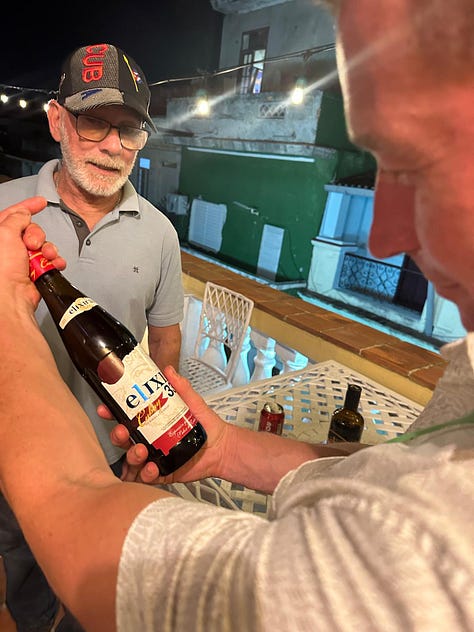
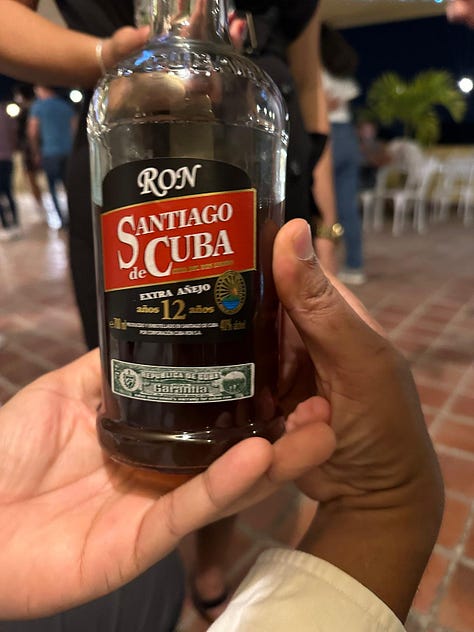
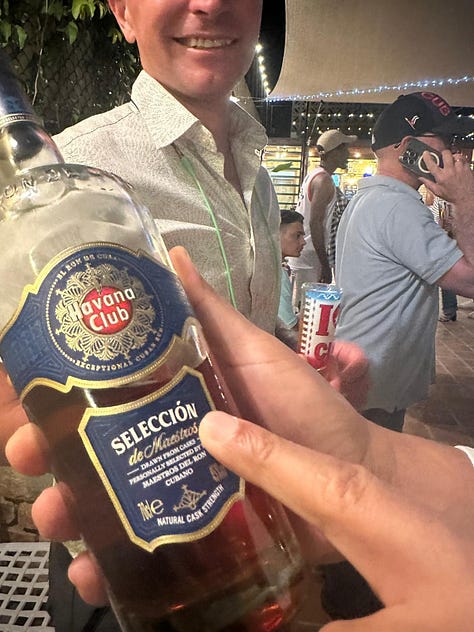
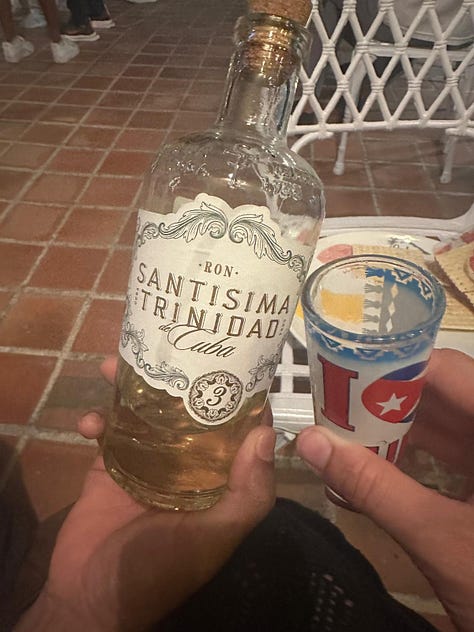
We try another rum. He tells stories of Cuba and his life. On the fourth rum I learn he is also a Spanish citizen. I ask why he chose to return to Cuba.
“This country has huge promise,” he says. “It has the makings of a paradise waiting for its chance. People here are hungry. We just need to wait out the government. They are already beginning to let things work. Because they have to, to stave off the ruin. Soon, we can move the economy forward.”
“What about the embargo,” I ask.
“Would be much easier if it goes away, but that is only a part of it. The change has to be from within.”
I look around at the happy faces of youth dancing around us. These resilient people make their lives work in difficult circumstances. Of course, they can sprint when the reigns are off.
The party ends at half past ten, on schedule. Pedro returns with a bottle of rum. Hands it to us.
“This is for your journey,” he says. “Next time you are here, you will stay with us as a guest. And no, you cannot pay.”


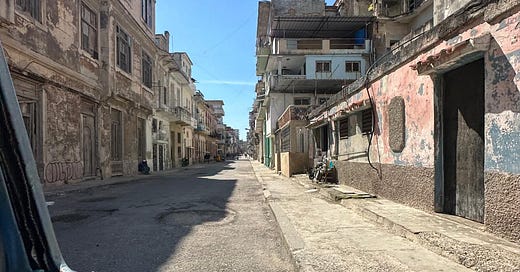



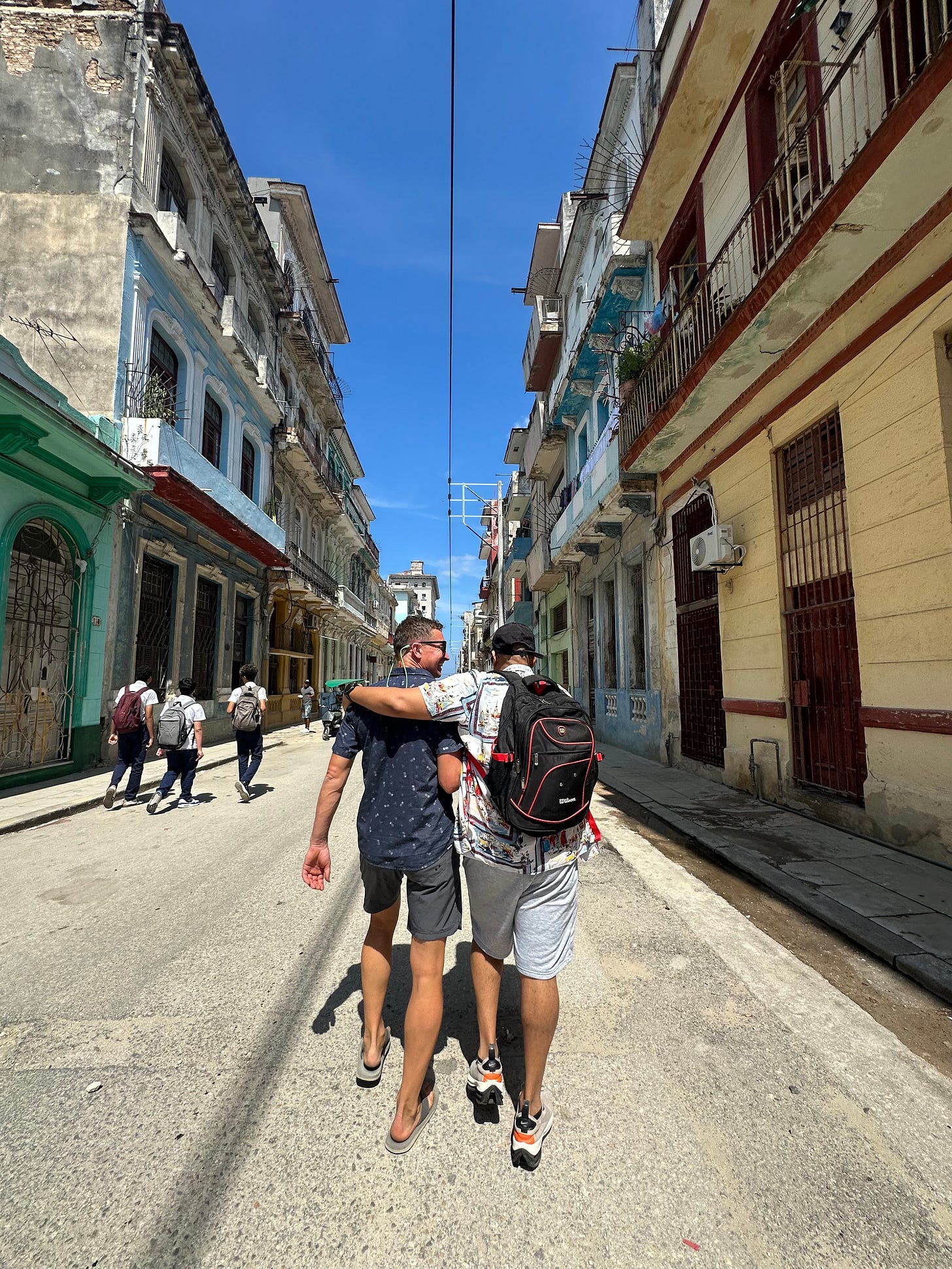
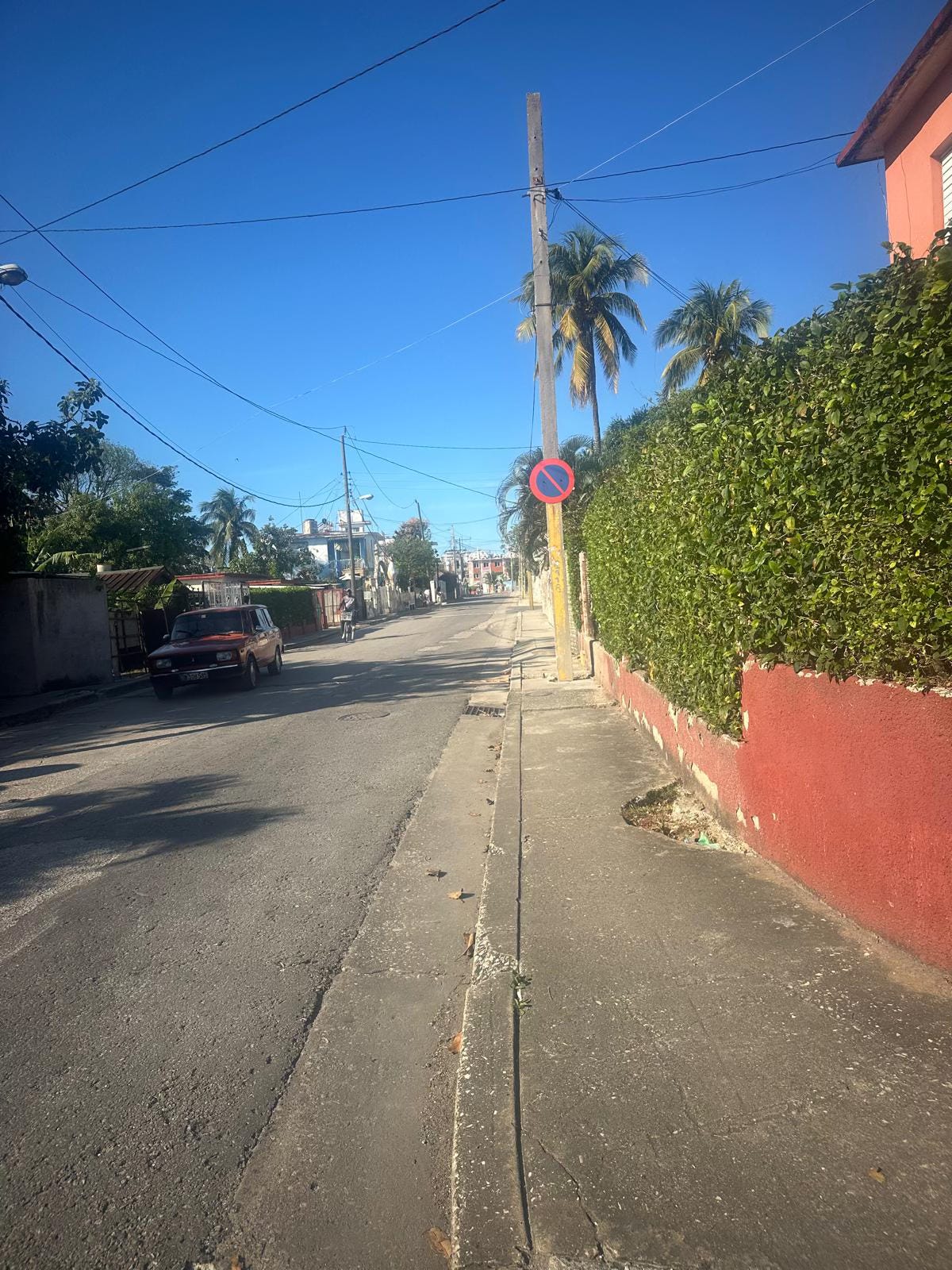
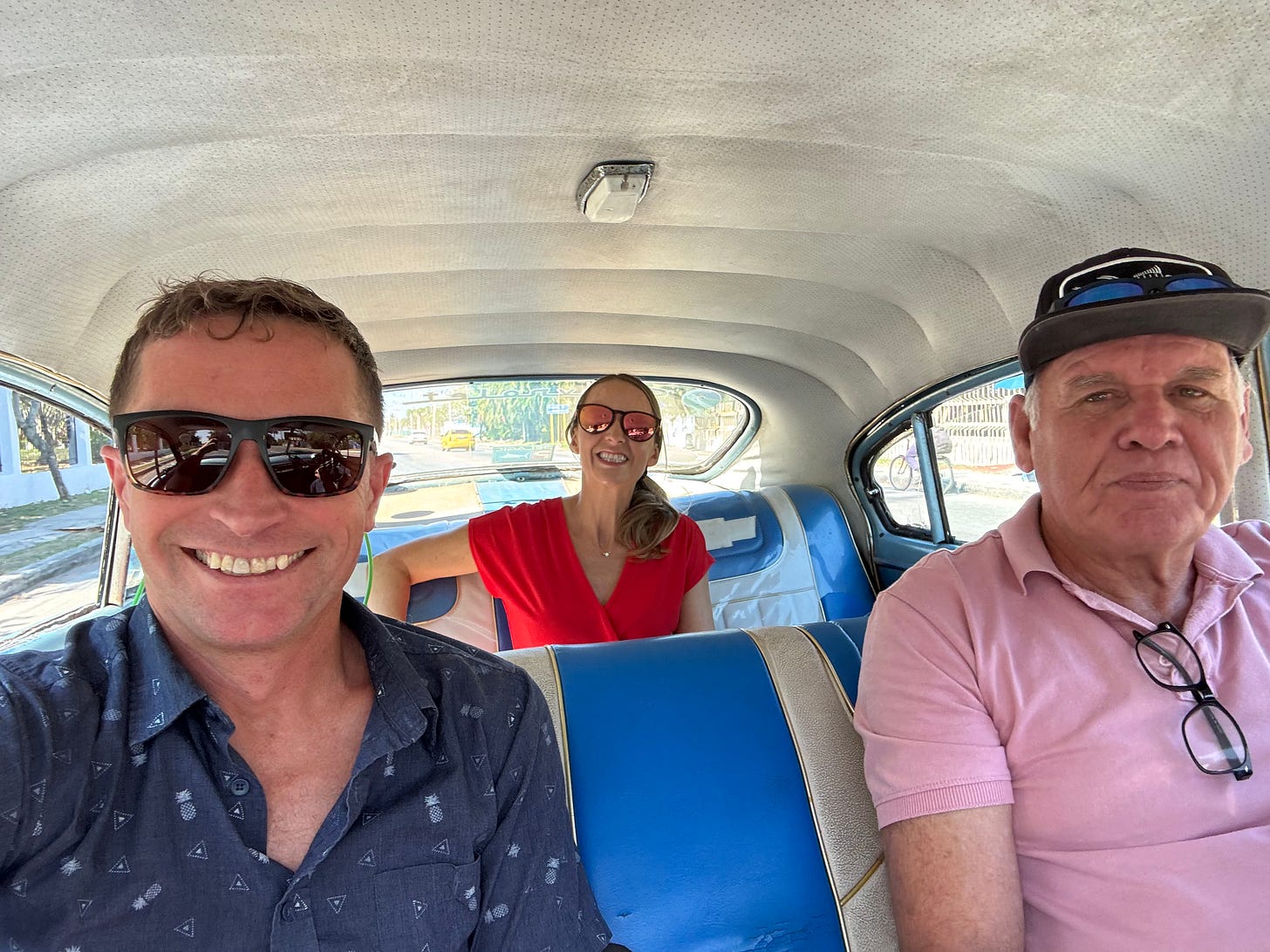
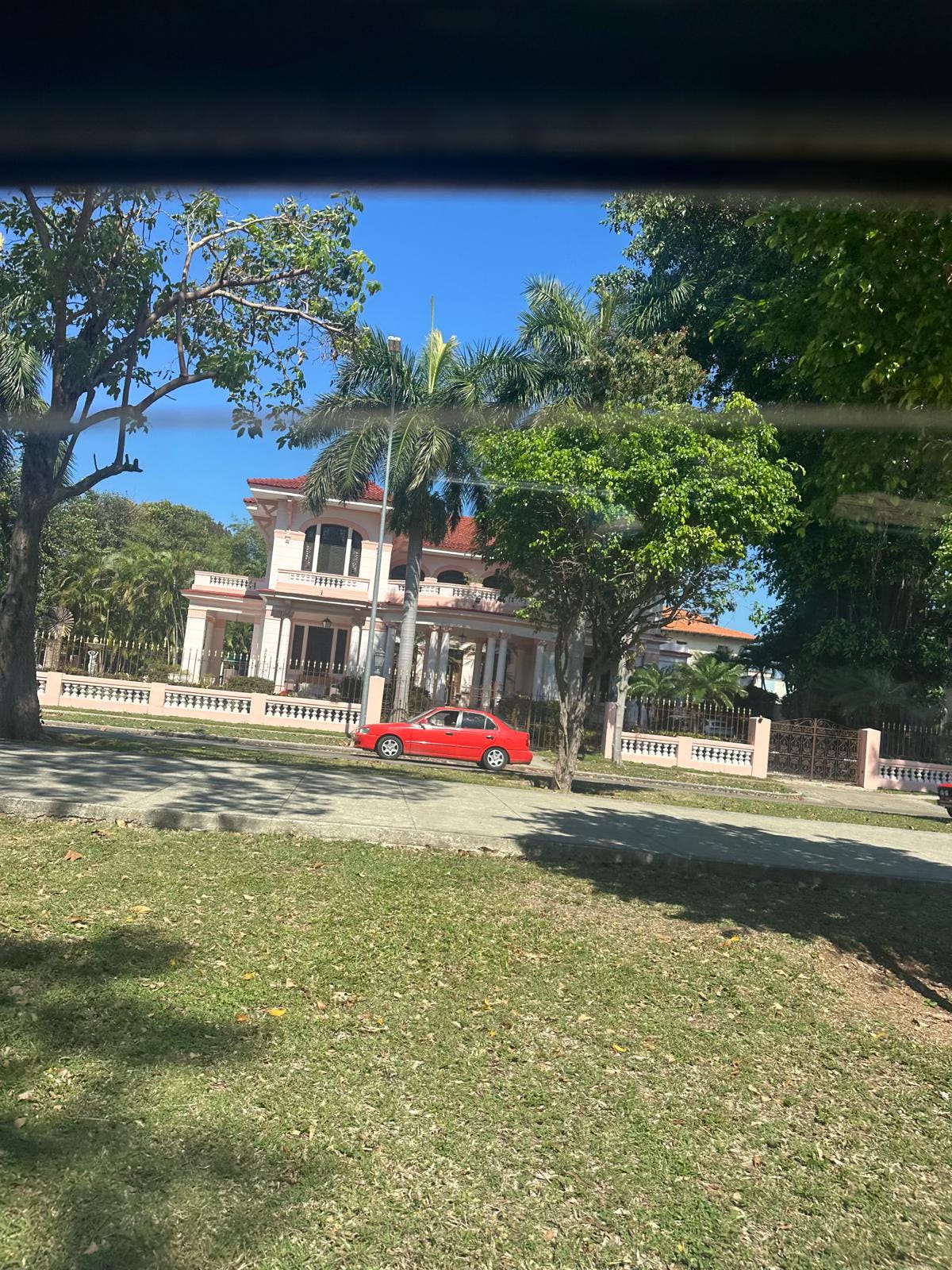
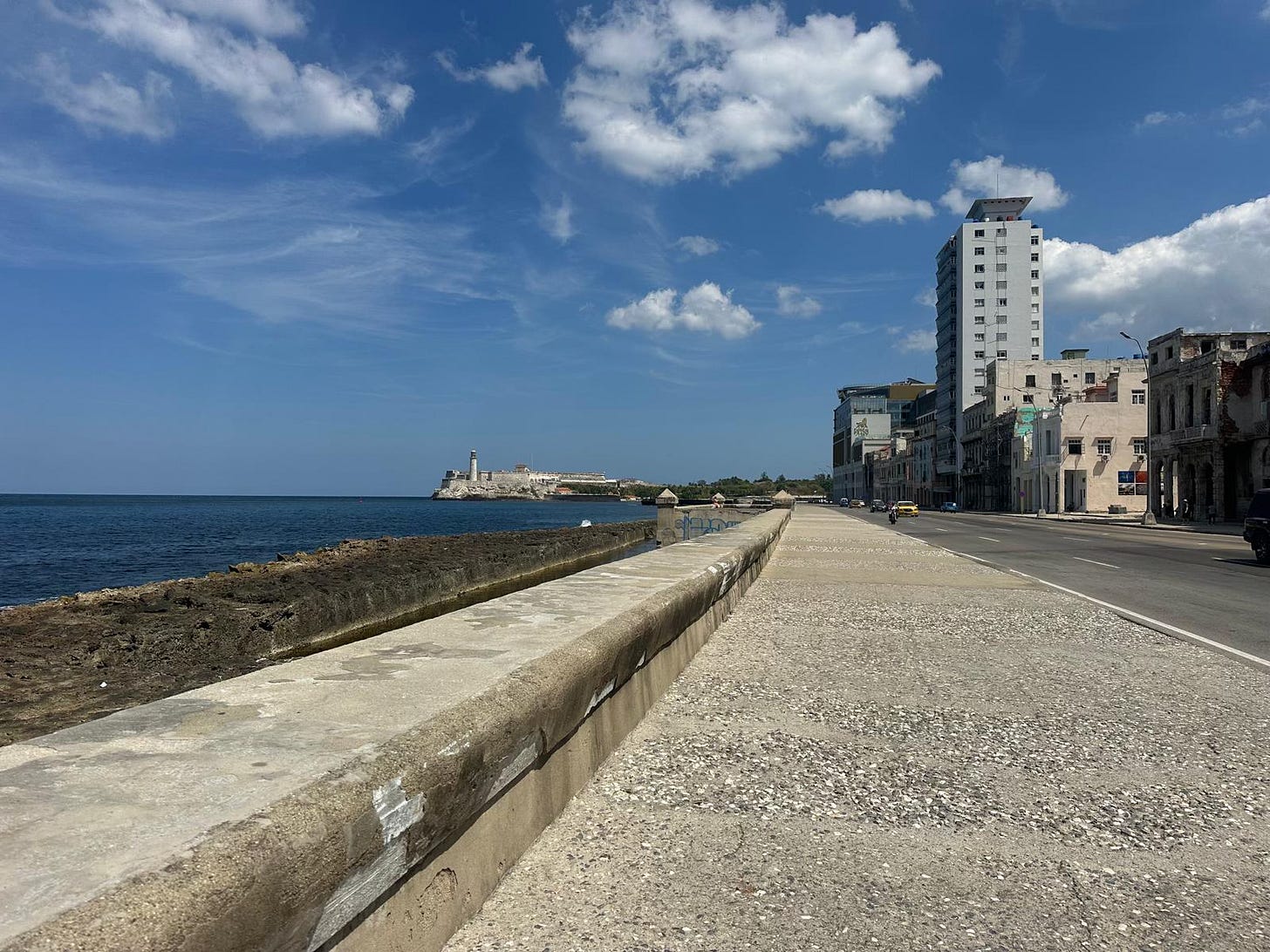
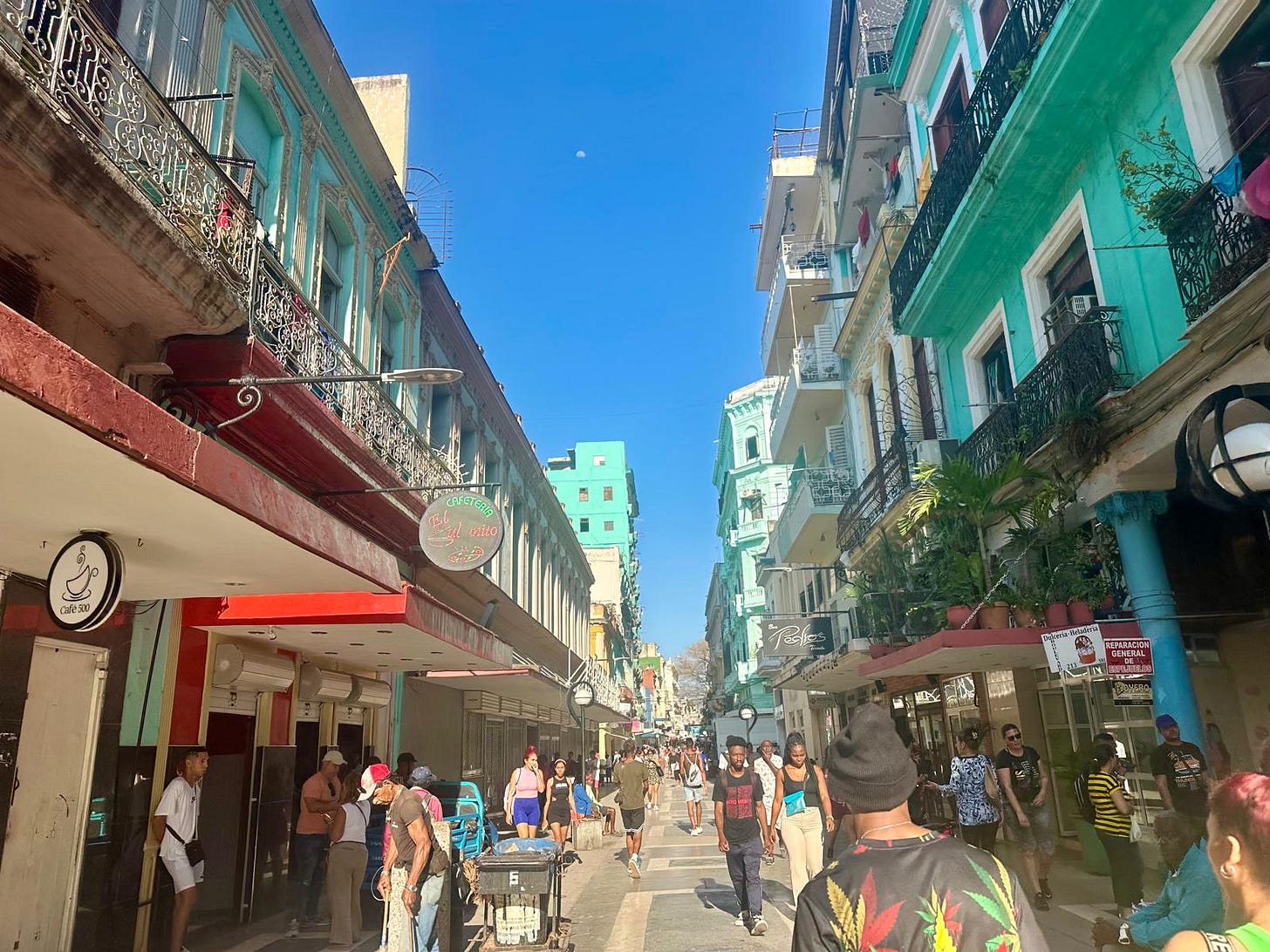
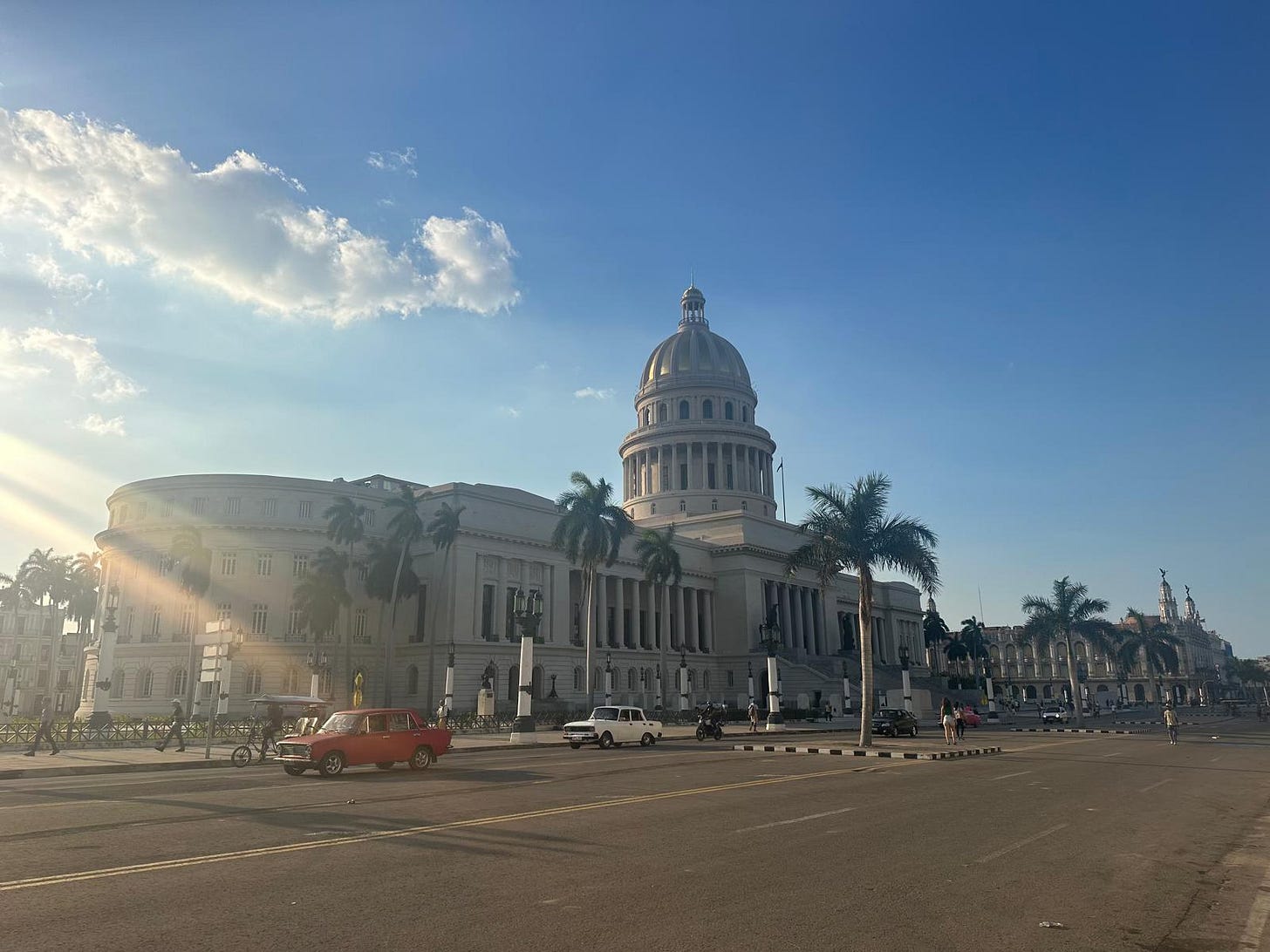

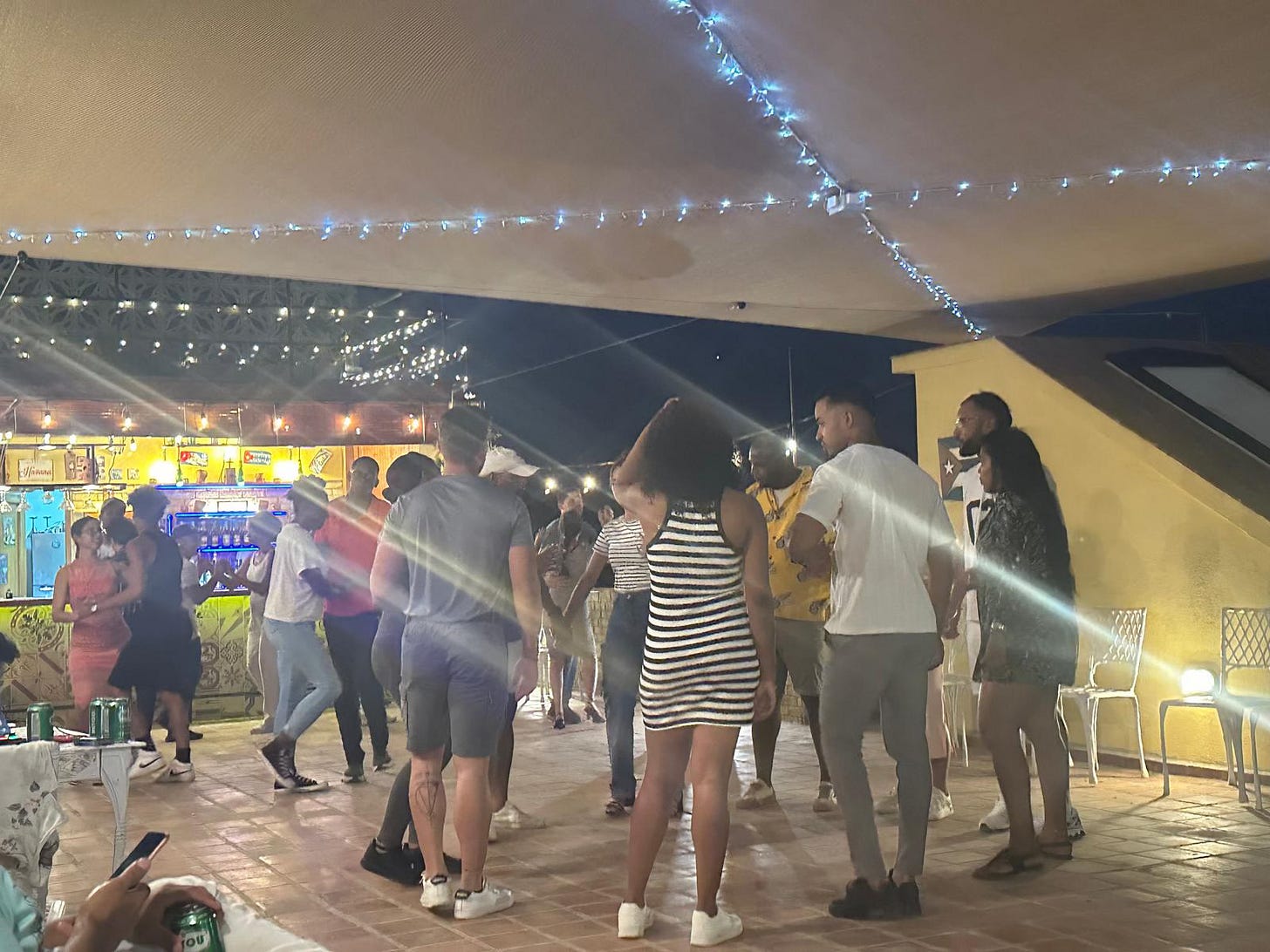
All this rum 😀 but I loved reading about Havana! Cheers!